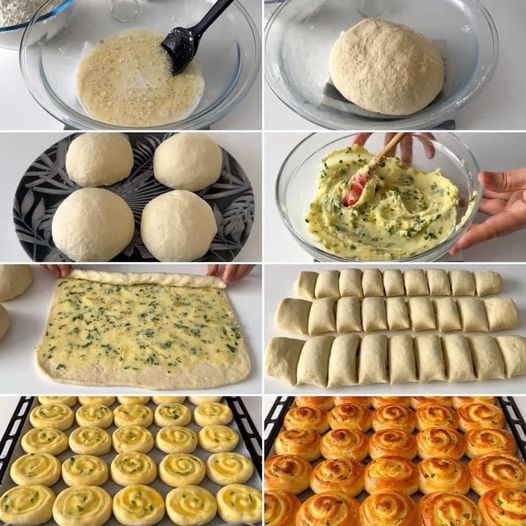Soft Pastry Dough
This soft pastry dough is a versatile and foolproof recipe, perfect for creating tender, flaky tarts, pies, quiches, and other baked goods. With simple ingredients and easy-to-follow steps, this dough is a must-have in your baking repertoire. Whether you’re a seasoned baker or a beginner, this recipe will help you achieve a buttery, melt-in-your-mouth crust every time.
The key to this dough lies in its simplicity and the careful handling of ingredients. By keeping the butter cold and avoiding overmixing, you ensure a light and flaky texture. The addition of sugar and vanilla extract (optional) adds a subtle sweetness, making it suitable for both sweet and savory recipes. Let’s dive into the details and learn how to make this soft pastry dough from scratch.
Ingredients
- 2 1/2 cups all-purpose flour (300 grams)
- 1/4 cup granulated sugar (50 grams)
- 1/2 teaspoon salt
- 1 cup (2 sticks) unsalted butter, cold
- and cut into small cubes (226 grams)
- 1/4 cup cold water (60 milliliters)
- 1 large egg yolk
- 1 teaspoon vanilla extract (optional)
Instructions
Begin by mixing the dry ingredients. In a large mixing bowl, whisk together the flour, sugar, and salt until well combined. This ensures an even distribution of the sugar and salt throughout the dough.
Next, cut in the cold, cubed butter. Add the butter to the flour mixture and use a pastry cutter or your fingertips to work the butter into the flour. The mixture should resemble coarse crumbs with some pea-sized pieces of butter remaining. These small butter pieces are essential for creating a flaky texture.
In a small bowl, whisk together the cold water, egg yolk, and vanilla extract (if using). Gradually drizzle this wet mixture over the flour and butter mixture. Gently toss everything together with a fork until the dough just begins to come together. Be careful not to overmix.
Turn the dough out onto a lightly floured surface and gently knead it a few times to bring it together into a smooth ball. Divide the dough in half and flatten each half into a disk. Wrap the disks in plastic wrap and refrigerate for at least 1 hour (or up to 2 days). Chilling the dough helps relax the gluten and solidify the butter, ensuring a tender and flaky crust.
When ready to use, remove the dough from the refrigerator and let it sit at room temperature for a few minutes to soften slightly. Roll out the dough on a lightly floured surface to your desired thickness, usually about 1/8 inch, for your tart or pie.
Tips for Success
- Keep ingredients cold: Cold butter and water are crucial for creating a flaky, tender crust. If the butter starts to soften too much, pop the dough back in the fridge for a few minutes.
- Do not overwork the dough: Overmixing or overhandling the dough can lead to a tough crust. Mix just until the dough comes together.
- Chill before baking: Chilling the dough before baking helps prevent shrinkage and ensures a more tender texture.
- Use a light touch: When rolling out the dough, use gentle pressure to avoid compressing it too much.
- Flour your surface: Lightly flour your work surface and rolling pin to prevent the dough from sticking.
- Customize the flavor: Add a pinch of cinnamon or citrus zest to the dough for a unique twist.
- Freeze for later: The dough can be frozen for up to 3 months. Thaw in the refrigerator before using.
Uses
This soft pastry dough is incredibly versatile and can be used for a variety of baked goods. It’s perfect for making pies, tarts, quiches, hand pies, and even sweet pastries like turnovers or galettes. Its tender, flaky texture pairs well with both sweet fillings like fruit compote and savory fillings like cheese and vegetables.
Conclusion
Making soft pastry dough from scratch is easier than you might think, and the results are well worth the effort. With its buttery, flaky texture and versatility, this dough is a fantastic base for countless baked creations. Whether you’re baking a classic apple pie or experimenting with savory tarts, this recipe will help you achieve professional-quality results.
So, roll up your sleeves, gather your ingredients, and get ready to impress your family and friends with your homemade pastries. Enjoy the process and the delicious rewards that come with it! Happy baking!
